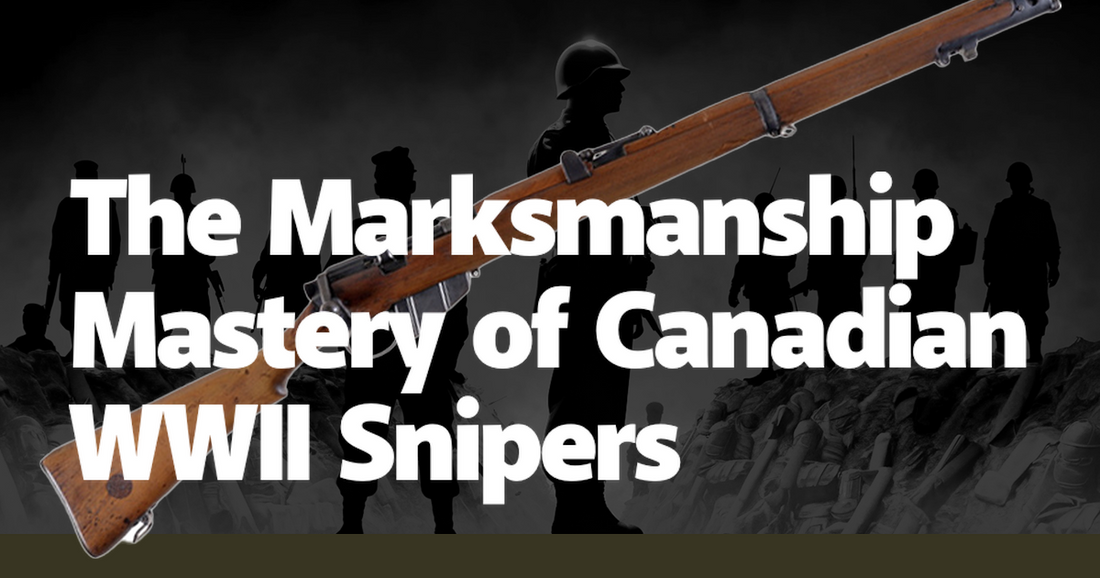The marksmanship mastery of Canadian WWII snipers is a testament to their unparalleled skill, patience, and dedication in the face of overwhelming adversity. These men, often operating in the shadows, played a crucial role in the success of Allied operations. Their precision and ability to remain undetected turned the tide in numerous battles, making them a formidable force against the Axis powers. The Canadian snipers were not just sharpshooters; they were masters of camouflage, experts in fieldcraft, and epitomes of endurance. Their stories are a blend of harrowing experiences and exceptional feats of marksmanship that continue to inspire military enthusiasts and historians alike.
One of the most notable Canadian snipers was Corporal Francis Pegahmagabow, an Ojibwa soldier from the Parry Island Band. Pegahmagabow's record of 378 confirmed kills and over 300 captures is a staggering testament to his skill. Despite facing discrimination and the inherent risks of his role, Pegahmagabow's contributions were invaluable. His ability to remain unseen and strike with deadly accuracy made him a legend among his peers. His exploits were not just about his kill count; they were about the psychological impact he had on the enemy, instilling fear and confusion within their ranks.
The training that Canadian snipers underwent was rigorous and exhaustive, designed to weed out all but the most capable. Recruits were subjected to intense physical conditioning, marksmanship drills, and lessons in stealth and camouflage. They were taught to read the terrain, understand the effects of weather on their shots, and blend seamlessly into their surroundings. This training was not just about hitting a target; it was about becoming one with the environment, turning the sniper into an invisible hunter. The curriculum was a blend of science and art, requiring a balance of technical skill and intuitive understanding.
Canadian snipers were often deployed in the most hostile environments, from the dense forests of Europe to the barren deserts of North Africa. These varied terrains required them to adapt quickly and improvise constantly. In the Italian Campaign, for instance, Canadian snipers played a pivotal role in the Battle of Ortona. The urban warfare setting demanded a different approach, where snipers had to navigate through rubble and ruins, using the debris to their advantage. Their ability to remain patient, sometimes waiting for days for the perfect shot, showcased their discipline and commitment.
The psychological warfare aspect of sniper operations cannot be understated. The mere presence of a sniper could paralyze an enemy unit, causing hesitation and fear. Canadian snipers excelled in this domain, using their skills to disrupt enemy movements and supply lines. Anecdotes from the front lines often speak of entire platoons being held at bay by a single sniper, their morale shattered by the unseen threat. This psychological edge was a force multiplier, amplifying the effectiveness of the Canadian forces beyond their numbers.
The equipment used by Canadian snipers was state-of-the-art for its time. The Lee-Enfield No. 4 Mk I(T) rifle, equipped with a telescopic sight, was the weapon of choice. This rifle, known for its accuracy and reliability, became an extension of the sniper's will. The snipers also used camouflage suits, ghillie suits, and other tools to enhance their stealth. The meticulous care they took in maintaining their equipment ensured that they could perform at their best in the most critical moments. Every shot fired was a culmination of training, preparation, and precision.
The legacy of Canadian WWII snipers extends beyond their wartime achievements. Their techniques and strategies have influenced modern sniper training programs worldwide. The principles of patience, precision, and psychological warfare they embodied are still relevant in today's military doctrines. The stories of these snipers are studied in military academies, serving as lessons in resilience and tactical brilliance. Their contributions have been commemorated in various forms, from books and documentaries to memorials and museums, ensuring that their legacy endures.
In conclusion, the marksmanship mastery of Canadian WWII snipers is a remarkable chapter in military history. Their exceptional skills, honed through rigorous training and relentless practice, made them an indispensable asset to the Allied forces. Their ability to operate in diverse and hostile environments, coupled with their psychological impact on the enemy, underscores their importance in the war effort. The legacy of these snipers continues to inspire and inform, reminding us of the extraordinary feats that can be achieved through dedication, skill, and unwavering resolve.

